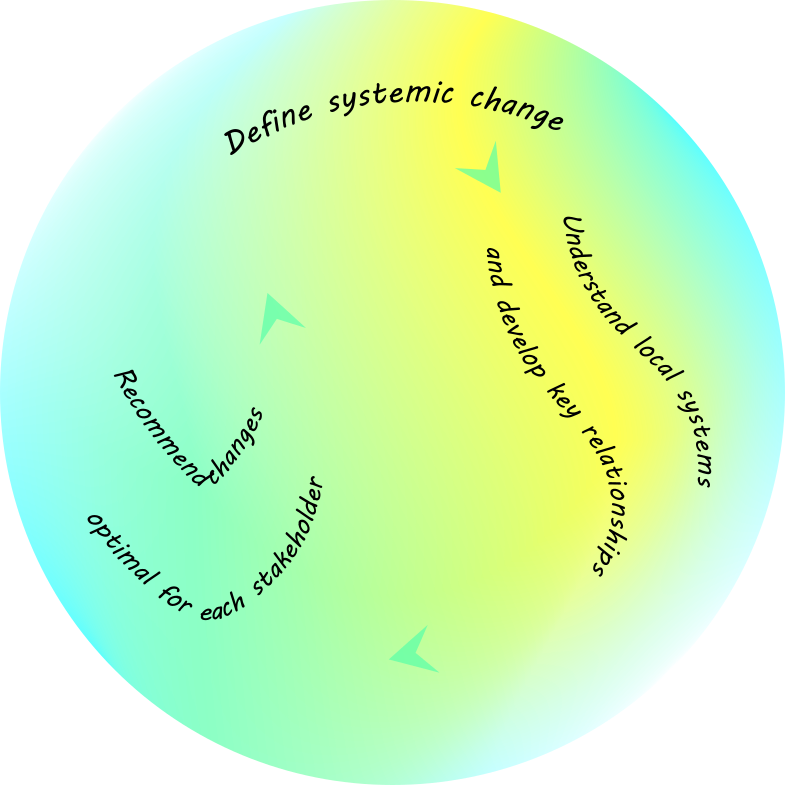This piece briefly outlines three steps that can be repeated to advance local systemic change: A) Define systemic change, D) Understand local systems and develop key relationships, and V) Recommend changes optimal for each stakeholder.
I thank David Reinstein for a clarification recommendation. All errors are mine.

A) Define systemic change beneficial to all sentient stakeholders and third parties, including those who exist in the future
This should be assessed based on the projected medium- and long-term institutional development under the business as usual scenario at any given time.
Presently, inspiration includes:
- A continuously self-improving system based on risk-mitigation and high overall wellbeing that progresses toward the most good
- System that advances the values of different individuals who are aware of their possible perceptions in alternative systems
- A set of areas that should be covered to secure optimal local institutions in the medium term
D) Understand the local systems while identifying and developing relationships with
a. Top-down decisionmakers interested in overall wellbeing-based systemic change
b. Actors who can choose among ventures of various systemic change marginal impact
c. Low-cost developers and adapters of systemic change additionalities
d. Funders interested in supporting systemic change additionalities implementation
V) Identify wellbeing improvement opportunities optimal for each actor and recommend
a. Unilateral opportunities (including policy and institutional amendments) for top-down decisionmakers
b. Programing scale adjustments to maximize total impact (e. g. scaling up high marginal benefit and deprioritizing further capacity building or vice versa)
c. Clients and partners interested in scaling up systemic change additionalities for those with relevant know-how
d. Cost-effective systemic change additionality funding opportunities within the scope of each funder’s interest
